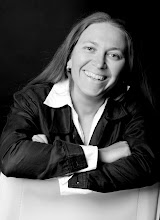
Director Elka Kerkhofs and Writer Mary Anne Butler
Read the synopsis here
When I first read Mary Anne Butler’s script, Golden Woman, I became instantly engaged with the themes of the project. While the film screamed out to be an animation, it was simultaneously tackling serious issues. Golden Woman is a film about the pressures placed upon Anglo–Australian women to maintain a particular body image which is idealized by Western society, and to resist the aging process.
After my first reading of the script, Mary Anne and I spoke about the themes, and realized that - in our encounters with Indigenous women in the Territory - there seemed to be more of a tendency to accept one’s body shape as it was. We felt strongly that we wanted to celebrate that idea, that women are to be celebrated in all their varied shapes, not just the skinny model shape we see in magazines. Aging is also something to respect in Indigenous culture, unlike the requisite `invisibility’ which Anglo women are expected to fade into.
I love being an animator as well as a director, a position which enables me to manipulate reality and make inanimate objects come to life. Anything can happen in animation, and I am excited about taking this script, and using my animation skills to convert the mundane into the fantastic in order to take the audience on a surreal journey, about a very real issue. Dora, the protagonist, travels through emotionally light and dark moments, before she finally learns to accept her own shape. That is the high point of the film – the moment which sees an Anglo Australian woman and an Indigenous Australian woman embrace each other, celebrating their beauty literally, and metaphorically. Their body shapes merge, and their deepest joy is expressed through laughter, all the colours on the screen unifying together in a big mixing pot.
Initially, I visualized Golden Woman in a very similar style to my previous award-winning animation Filled With Water - where the 2D design of the main characters is based on real people [the film is literally shot with real people, after which the roto-scoping process begins, and the footage is drawn over to create the animation. Please refer to the support material: “Filled With Water”, the making of for a demonstration of this technique].
However, after a three-day location scout and stills shoot with actors in May this year [to prepare the animatic for this AFC application], I realized that Golden Woman screams out to be a more traditional 2D hand drawn animation film. The stills backgrounds pointed me clearly towards a painted, `watercolour’ effect, with the characters digitally coloured in, as they were for Filled With Water.
It is very important for any film project to go through a solid development process, and Mary Anne and I were lucky enough to get support from the NT Film Office in order to refine the script and prepare animatic, storyboards and character sketches. In the last two months the storyboards have been drawn up, the characters have been designed, a colour palette for all the shots has been made, and sets have been designed in order to finally create the animatic which will provide the template for the finished work.
The visual process has been accompanied by assistance with the soundtrack, through Darwin-based production company Skinnyfish Music, who are committed to seeing he project through from start to finish. Sound designer Ben Hurt has also committed his involvement in the longer term, and I look forward to working with this team on the sound production of Golden Woman.
Through this development stage we now have a solid knowledge of the look and pacing of the film. And it is from here that we have made our production budget and production schedule. For this Mary Anne and myself are very pleased that Kate Breen has joined this already strong team as a driving force. A strong supporter of the script and of the process, Kate’s own previous work speaks for itself. She has already garnered interest for potential television screenings, and I have the utmost faith in her ability to market Golden Woman not just within Australia, but overseas.
Kate, Mary Anne, Ben, Skinnyfish and myself have already formed a very strong collaborative working relationship during the course of this project, with a view to future projects. As I have worked on different projects in the past with each of the collaborative people involved, I feel very confident about bringing this very strong team together and creating something amazing that needs to be told. A film that is dying to be born!
Golden Woman is firmly set in the unique Northern Territory. But it tells a story that is larger. This story will speak to many; it transcends cultures, it concerns women throughout the world.
I’m very, very excited about creating this new work, in a very unique, multicultural Australian way.
Elka Kerkhofs
August, 2007

